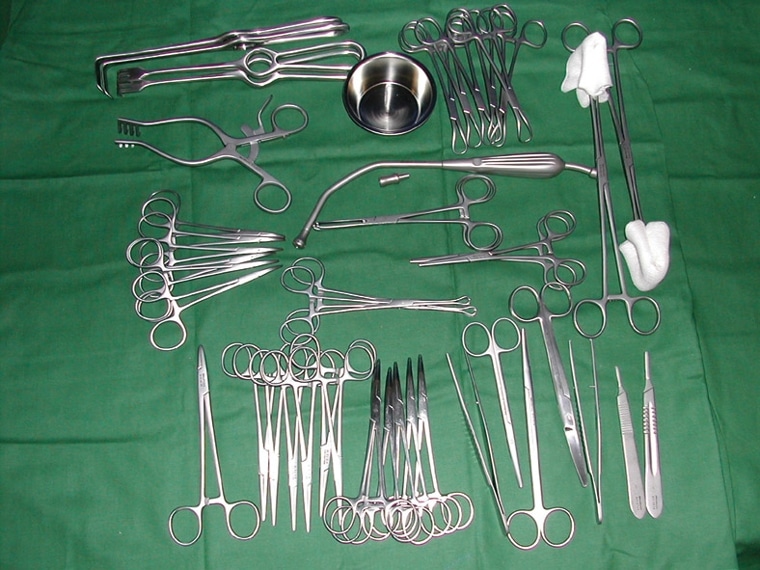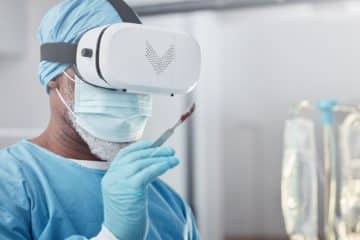Surgical Instruments List – Overview
Surgery is defined by the “Medical Dictionary” as the “branch of medicine that is concerned with conditions that are amenable to, or require, operative procedures.”

Surgical Instruments list
Surgical instruments are specially designed tools that assist healthcare professionals in carrying out specific actions during a surgical operation. This post provides a detailed list of surgical instruments and their functions.
Surgical instruments can be generally divided into five classes by function. These classes are:
- Cutting and Dissecting Instruments
- Grasping or Holding Instruments
- Hemostatic Instruments
- Tissue Unifying Instruments
1. Cutting and Dissecting Instruments
These surgical instruments, as the name implies, are used for cutting and dissecting the skin, tissue and suture material. These instruments usually have sharp edges, which enable surgeons to cut and dissect tissue to explore irregular growths and remove dangerous or damaged tissue. Examples of cutting and dissecting instruments include scalpels, scissors, saws, etc.
i. Scalpels

list of Surgical Instruments
A scalpel is a fine-edge cutting instrument with a blade that allows the surgeon to exert maximum control while cutting tissues and is used to make incisions in the skin or other tissues.
Surgical scalpels consist of two parts, a blade and a handle. The handles are often reusable, with the blades being replaceable. In medical applications, each blade is only used once (even if just for a single, small cut).
Functions of Scapel
The scalpel is most commonly used to make the initial incision that opens the body for surgery. Scalpels are also used to cut the skin in abdominal operations.
ii. Scissors

Scissors
Surgical scissors are surgical instruments usually used for cutting. They include bandage scissors, dissecting scissors, iris scissors, operating scissors, stitch scissors, tenotomy scissors, Metzenbaum scissors, plastic surgery scissors, and Mayo scissors.
Functions of Surgical Scissors
Trauma Shears – For use in emergency medical response and rescue should it be necessary to cut off clothing. The rounded tips are designed to slide across the patient’s skin without causing injury.
Dissecting Scissors – They are used for cutting flesh in dissection.
Metzenbaum scissors – They are used for delicate surgery.
Tenotomy scissors – They are used for delicate surgery.
Mayo scissors – They are often used for cutting fascia. Mayo scissors may also be used to cut sutures and heavy body tissues.
Bandage scissors – They are used for cutting bandages.
iii. Bone Cutter
A bone cutter is a surgical instrument used to cut or remove bones.
Functions of Bone Cutter
There is a variety of bone cutters and they have their specialized functions.
Costotome – A Costotome is a specialized rib cutter used to gain access to the thoracic cavity.
Sternal Saw – A sternal saw is a bone cutter used to perform median sternotomy, opening the patient’s chest by splitting the breastbone or sternum.
Unpowered – In many applications, the saw is used in specialized jigs to provide accurate, measurable cuts, e.g., in knee surgery.
2. Grasping or holding instruments
Grasping and holding instruments are used to hold tissue, drapes or sponges. Examples include Forceps, Towel Clamps, vascular clamps, and organ holders.
i. Forceps

list of Surgical Instruments
Surgeons use forceps during surgical procedures to hold onto or manipulate tissues and to clamp blood vessels. Surgical forceps are hinged instruments, similar in design to scissors, but with tong-like or flat tips that are used to hold, clamp or move tissues during surgery. Forceps come in three varieties: tissue/dressing forceps, intestinal forceps and hemostats (used to clamp blood vessels).
ii. Towel Clamps
A towel Clamp is a perforating clamp used for grasping tissue, securing towels or drapes and holding or reducing small bone fractures.
iii. Needle Holder

list of Surgical Instruments – Needle holder
A needle holder, also called a needle driver, is a surgical instrument similar to a hemostat used by doctors and surgeons to hold a suturing needle for closing wounds during suturing and surgical procedures. The parts of a simple needle holder are the jaws, the joint and the handles. Most needle holders also have a clamp mechanism that locks the needle in place, allowing the user to maneuver the needle through various tissues.
3. Haemostatic Instruments
This is another class of surgical instruments that are used in occluding blood vessels and helps control bleeding during a surgical operation. Examples of hemostatic surgical instruments include Kocher’s and Billroth’s clamps, Hemostatic forceps, Atraumatic hemostatic forceps, and Deschamp’s needle.
i. Korcher’s Forceps
The Kocher’s Forceps is named after Emil Theodor Kocher, a Swiss surgeon who was awarded Nobel Prize in 1909
The function of Korcer’s Forceps
The Kocher’s is a hemostatic forceps. It is specifically designed to catch the bleeder that is deep within tissue; hence it is ideally used on tough structures like palms, soles or scalp. The forceps catch the structure that is bleeding and crush the bleeder resulting in clogging. The tooth gripped the structure firmly so that the tissue did not slip.
ii. Kelly Forceps
Kelly forceps are a type of hemostat usually made of stainless steel. They resemble a pair of scissors with the blade replaced by a blunted grip. They may be either curved or straight. In surgery, they may be used for occluding blood vessels, manipulating tissues, or for assorted other purposes.
iii. Spencer Wells artery forceps
They are used during surgery to compress the artery, clamp and seal small blood vessels or manipulate the artery.
iv. Mosquito forceps
They are small, straight or curved hemostatic forceps used to hold delicate tissue or compress a bleeding vessel.
4. Tissue unifying surgical instruments and materials
This is another class of surgical instruments that includes tissue unifying instruments and materials such as needle holders, surgical needles, staplers, clips, and adhesive tapes.
i. Needle Holders
Needle holders are hinged instruments that have a carbide insert in the tip to prevent slipping. They are used to hold the needle when sewing body tissues, which provides more control than sewing by hand. Needle holders may or may not also have cutting blades that can be used for cutting thread.
ii. Surgical Needles
Surgery requires the use of several different types of needles. Needles need to be strong enough to pass through tough tissue while causing minimal trauma to delicate tissues and reducing tissue reactions. Needles are made of steel, come in different sizes, have blunt or sharp points, and can be curved or straight. Surgical needles are necessary for the placement of sutures in tissues.
iii. Staplers
Surgical staples are specialized staples used in surgery in place of sutures to close skin wounds and connect or remove parts of the bowels or lungs.
The use of staples over sutures reduces the local inflammatory response, the width of the wound, and the time it takes to close. A more recent development from the 1990s uses clips instead of staples for some applications; this does not require the staple to penetrate.
This is an inexhaustive list of surgical instruments. Feel free to add your details in the comment below.
Sutured offers a wide variety of high-quality surgical instruments specially designed to meet all specialized surgical needs.


